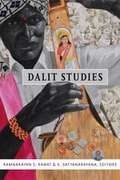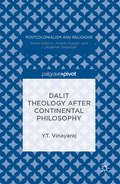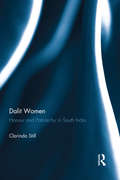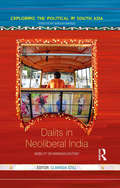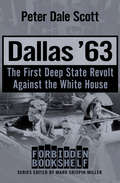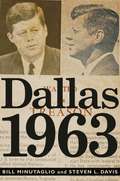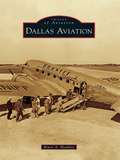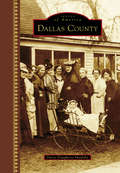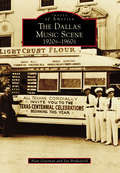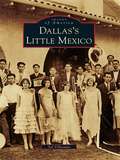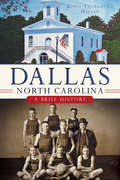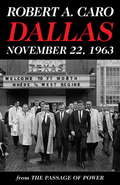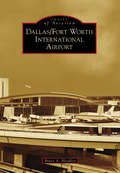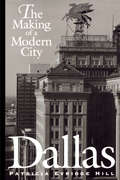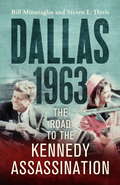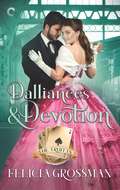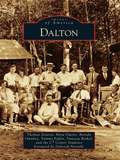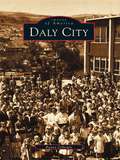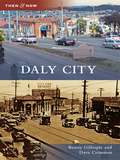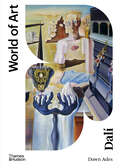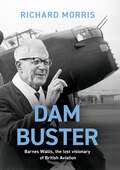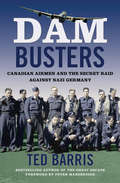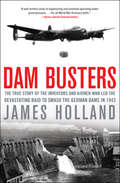- Table View
- List View
Dalit Studies
by K. Satyanarayana Ramnarayan S. RawatThe contributors to this major intervention into Indian historiography trace the strategies through which Dalits have been marginalized as well as the ways Dalit intellectuals and leaders have shaped emancipatory politics in modern India. Moving beyond the anticolonialism/nationalism binary that dominates the study of India, the contributors assess the benefits of colonial modernity and place humiliation, dignity, and spatial exclusion at the center of Indian historiography. Several essays discuss the ways Dalits used the colonial courts and legislature to gain minority rights in the early twentieth century, while others highlight Dalit activism in social and religious spheres. The contributors also examine the struggle of contemporary middle-class Dalits to reconcile their caste and class, intercaste tensions among Sikhs, and the efforts by Dalit writers to challenge dominant constructions of secular and class-based citizenship while emphasizing the ongoing destructiveness of caste identity. In recovering the long history of Dalit struggles against caste violence, exclusion, and discrimination, Dalit Studies outlines a new agenda for the study of India, enabling a significant reconsideration of many of the Indian academy's core assumptions. Contributors: D. Shyam Babu, Laura Breuck, Sambaiah Gundimeda, Gopal Guru, Rajkumar Hans, Chinnaiah Jangam, Surinder Jodhka, P. Sanal Mohan, Ramnarayan Rawat, K. Satyanarayana
Dalit Theology after Continental Philosophy (Postcolonialism and Religions)
by Y. T. VinayarajThis book, steeped in the traditions of both postcolonial theory and Continental philosophy, addresses fundamental questions about God and theology in the postcolonial world. Namely, Y. T. Vinayaraj asks whether Continental philosophies of God and the 'other' can attend to the struggles that entail human pain and suffering in the postcolonial context. The volume offers a constructive proposal for a Dalit theology of immanent God or de-othering God as it emerges out of the Lokayata, the Indian materialist epistemology. Engaging with the post-Continental philosophers of immanence such as Gilles Deleuze, Giorgio Agamben, Catherine Malabou, and Jean-Luc Nancy, Vinayaraj explores the idea of a Dalit theology of God and body in the post-Continental context. The book investigates how there can be a Dalit theology of God without any Christian philosophical baggage of transcendentalism. The study ends with a clarion call for Indian Christian Theology to take a turn toward an immanence that is political and polydoxical in content.
Dalit Women: Honour and Patriarchy in South India
by Clarinda StillOne of the only ethnographic studies of Dalit women, this book gives a rich account of individual Dalit women’s lives and documents a rise in patriarchy in the community. The author argues that as Dalits’ economic and political position improves, ‘honour’ becomes crucial to social status. One of the ways Dalits accrue honour is by altering patterns of women’s work, education and marriage, and by adopting dominant-caste gender practices. But Dalits are not simply becoming like upper castes; they are simultaneously asserting a distinct, politicised Dalit identity, formed in direct opposition to the dominant castes. They are developing their own ‘politics of culture’. Key to both, the author argues, is the ‘respectability’ of women. This has significant effects on gender equality in the Dalit community.
Dalits in Neoliberal India: Mobility or Marginalisation? (Exploring the Political in South Asia)
by Clarinda StillIndia’s economic growth has brought opportunities for many but to what extent has it benefitted its ethnically-shaped underclass: the Dalits? Have Dalits fared better in a neoliberal India or have structural economic and social changes served to magnify Dalit disadvantage? This volume offers a varied picture of Dalit experience in different states in contemporary India. The essays draw on factual research in rural and urban areas by experts in the field. With case studies ranging from Dalit entrepreneurs in Bhopal to housewives in Tamil Nadu to ex-millworkers in Mumbai, the book contends that radically progressive change and advance is attended by discrimination and exclusion, as well as surprising new areas of stigma. With contributions by political scientists, anthropologists, sociologists, and economists, the volume will be key reading for scholars and students of Dalit and subaltern studies, sociology, political science, and economics.
Dallas '63: The First Deep State Revolt Against the White House (Forbidden Bookshelf #17)
by Peter Dale ScottWith a foreword by Rex Bradford and a preface by Bill Simpich: From deep within American society emerged the plot that killed a president Beneath the orderly façade of the American government lies a complex network, only partly structural, linking Wall Street influence, corrupt bureaucracy, and the military-industrial complex. Here lies the true power of the American empire: This behind-the-scenes web is unelected, unaccountable, and immune to popular resistance. Peter Dale Scott calls this entity the deep state, and he has made it his life's work to write the history of those who manipulate our government from the shadows. Since the aftermath of World War II, the deep state's power has grown unchecked, and nowhere has it been more apparent than at sun-dappled Dealey Plaza on November 22, 1963. The central mystery of the JFK assassination is not who fired the guns that fateful day, but the untouchable forces behind the shooters. In this landmark volume, Scott traces how culpable elements in the CIA and FBI helped prepare for the assassination, and how such elements continue to influence our politics today. In his 1993 publication Deep Politics and the Death of JFK, Scott looked closely at the foreground of the assassination: Lee Harvey Oswald, Jack Ruby, and their connections to Dallas law enforcement, to the underworlds of Dallas and New Orleans, and to Cuba. This new book, in contrast, looks at the assassination as an event emanating from the American deep state, including actions of the CIA and FBI in Washington and Mexico City, and apparent continuities with later deep events, notably Watergate, the Iran-Contra affair, and 9/11. Dallas '63 concludes with an overview of the 2 pivotal decades between the death of JFK and the Reagan Revolution, when all 4 presidents following Kennedy were increasingly at odds with deep state ambitions for world hegemony and saw their presidential careers prematurely terminated.
Dallas 1963
by Bill Minutaglio Steven L. DavisIn the months and weeks before the fateful November 22nd, 1963, Dallas was brewing with political passions, a city crammed with larger-than-life characters dead-set against the Kennedy presidency. These included rabid warriors like defrocked military general Edwin A. Walker; the world's richest oil baron, H. L. Hunt; the leader of the largest Baptist congregation in the world, W.A. Criswell; and the media mogul Ted Dealey, who raucously confronted JFK and whose family name adorns the plaza where the president was murdered. On the same stage was a compelling cast of marauding gangsters, swashbuckling politicos, unsung civil rights heroes, and a stylish millionaire anxious to save his doomed city.Bill Minutaglio and Steven L. Davis ingeniously explore the swirling forces that led many people to warn President Kennedy to avoid Dallas on his fateful trip to Texas. Breathtakingly paced, DALLAS 1963 presents a clear, cinematic, and revelatory look at the shocking tragedy that transformed America. Countless authors have attempted to explain the assassination, but no one has ever bothered to explain Dallas-until now.With spellbinding storytelling, Minutaglio and Davis lead us through intimate glimpses of the Kennedy family and the machinations of the Kennedy White House, to the obsessed men in Dallas who concocted the climate of hatred that led many to blame the city for the president's death. Here at long last is an accurate understanding of what happened in the weeks and months leading to John F. Kennedy's assassination. DALLAS 1963 is not only a fresh look at a momentous national tragedy but a sobering reminder of how radical, polarizing ideologies can poison a city-and a nation.
Dallas Aviation (Images of Aviation)
by Bruce A. BleakleySince Otto Brodie's airplane flight at Fair Park in 1910, the city of Dallas has seen over 100 years of rich and diverse aviation activity. Many of those years were spent on a long and complex road to a consolidated airport for the Dallas-Fort Worth area, an impasse finally resolved with the dedication of Dallas-Fort Worth Regional Airport in 1974. Central to Dallas aviation history is Love Field, established as a military base in 1917. A waypoint for famous flights such as the first round-the-world flight in 1924, a venue for colorful characters like barnstormer and bootlegger "Slats" Rodgers, and the site of World War II's largest Air Transport Command base--Love Field was all this and more. Although no longer the region's primary commercial airfield, Love Field remains a major aviation facility as the home of Southwest Airlines and several internationally recognized business aircraft operations.
Dallas County (Images of America)
by Darcy Dougherty-MaulsbyNo Iowa county has influenced American history more than Dallas County. It propelled Harry Truman to an unlikely victory in the 1948 presidential campaign, following a fiery speech he delivered to 100,000 farmers on a sweltering September day at the National Plowing Match near Dexter. Just 15 years earlier, a shoot-out near Dexfield Park marked the beginning of the end for infamous outlaws Bonnie and Clyde and the notorious Barrow Gang. Dallas County, located just west of Des Moines, has produced several major-league baseball players (among them Bob Feller and Hal Manders), a US congressman (David Young), and Nile Kinnick, the 1939 Heisman Trophy winner and University of Iowa football legend whose grandfather George Clarke, of Adel, served as Iowa’s governor from 1913 to 1917. Today, Dallas County is one of the fastest-growing counties in America and remains a region of opportunity with a rich heritage of small-town living, farming, coal mining, and the immigrant experience.
Dallas Music Scene: 1920s-1960s, The
by Alan Govenar Jay BrakefieldFor much of the 20th century, Dallas was home to a wide range of vital popular music. By the 1920s, the streets, dance halls, and vaudeville houses of Deep Ellum rang with blues and jazz. Blind Lemon Jefferson was discovered singing the blues on the streets of Deep Ellum but never recorded in Dallas. Beginning in the 1930s, however, artists from Western swing pioneer Bob Wills to blues legend Robert Johnson recorded in a three-story zigzag moderne building at 508 Park Avenue. And from the late 1940s to the mid-1960s, a wrestling arena called the Sportatorium was home to a Saturday night country and rock-and-roll extravaganza called the Big "D" Jamboree.
Dallas's Little Mexico (Images of America)
by Sol VillasanaLittle Mexico was Dallas's earliest Mexican barrio. "Mexicanos" had lived in Dallas since the mid-19th century. The social displacement created by the Mexican Revolution of 1910, however, caused the emergence of a distinct and vibrant neighborhood on the edge of the city's downtown. This neighborhood consisted of modest homes, small businesses, churches, and schools, and further immigration from Mexico in the 1920s caused its population to boom. By the 1930s, Little Mexico's population had grown to over 15,000 people. The expanding city's construction projects, urban renewal plans, and land speculation by developers gradually began to dismantle Little Mexico. By the end of the 20th century, Little Mexico had all but disappeared, giving way to upscale high-rise residences and hotels, office towers of steel and glass, and the city's newest entertainment district. This book looks at Little Mexico's growth, zenith, demise, and its remarkable renaissance as a neighborhood.
Dallas, North Carolina: A Brief History
by Kitty Thornburg HellerWalking the historic streets of Dallas, North Carolina, reveals a town unchanged by time. The Gaston County seat for over sixty years, the town has roots that were planted in the days of Native American and early immigrant settlement. Union soldiers camped in the Court Square during the Civil War. The famed Dallas Courthouse rose from the ashes of a devastating fire in 1874. Discover notable natives such as the longest-serving UNC president, Dr. William C. Friday, and get a glimpse into Dallas past, present and future. And with mouth-watering regional recipes pulled straight from Dallas residents, this book is a trip back to the halcyon days of the small-town South. Follow along with Dallas native and author Kitty Heller as she chronicles the history of a truly unique small town.
Dallas, November 22, 1963 (A Vintage Short)
by Robert A. CaroThis account of the Kennedy assassination ("the most riveting ever," says The New York Times) is taken from Robert A. Caro's brilliant and best-selling The Passage of Power. An eBook Short.Here is that tragic day in Dallas alive with startling details reported for the first time by the two-time Pulitzer Prize-winning author. Just as scandals that might end his career are about to break over Lyndon Johnson's head, the motorcade containing the presidential party is making its slow and triumphant way along the streets of Dallas. In Caro's breathtakingly vivid narrative, we witness the shots, the procession speeding to Parkland Memorial Hospital, the moment when Kennedy aide Lawrence O'Donnell tells Johnson "He's gone," and Johnson's iconic swearing in on Air Force One. Compelling.
Dallas/Fort Worth International Airport (Images of Aviation)
by Bruce A. BleakleyEncompassing 27 square miles, Dallas/Fort Worth International is one of the world's largest and busiest airports, accommodating more than 150,000 passengers each day. The 1974 opening of "D/FW" was preceded by nearly half a century of an often acrimonious aviation rivalry between Dallas and Fort Worth that featured a colorful cast of business leaders, municipal officials, and airline executives. Through its first 40 years, D/FW grew from a regional hub into a global crossroads for passenger and air cargo service. Bold, imaginative leadership sustained the airport through the failure of its largest tenant airline, the effects of 9/11, an air traffic controllers' strike, and more than one fuel crisis. An extraordinary economic engine for North Texas, D/FW stands poised to become home to the world's largest airline, validating the original planners' dream of a dynamic focal point for domestic and international commercial aviation.
Dallas: The Making of a Modern City
by Patricia Evridge HillFrom the ruthless deals of the Ewing clan on TV's "Dallas" to the impeccable customer service of Neiman-Marcus, doing business has long been the hallmark of Dallas. Beginning in the 1920s and 1930s, Dallas business leaders amassed unprecedented political power and civic influence, which remained largely unchallenged until the 1970s. In this innovative history, Patricia Evridge Hill explores the building of Dallas in the years before business interests rose to such prominence (1880 to 1940) and discovers that many groups contributed to the development of the modern city. In particular, she looks at the activities of organized labor, women's groups, racial minorities, Populist and socialist radicals, and progressive reformers-all of whom competed and compromised with local business leaders in the decades before the Great Depression. This research challenges the popular view that business interests have always run Dallas and offers a historically accurate picture of the city's development. The legacy of pluralism that Hill uncovers shows that Dallas can accommodate dissent and conflict as it moves toward a more inclusive public life. Dallas will be fascinating and important reading for all Texans, as well as for all students of urban development.
Dallas: The Making of a Modern City
by Patricia Evridge HillFrom the ruthless deals of the Ewing clan on TV’s "Dallas" to the impeccable customer service of Neiman-Marcus, doing business has long been the hallmark of Dallas. Beginning in the 1920s and 1930s, Dallas business leaders amassed unprecedented political power and civic influence, which remained largely unchallenged until the 1970s. In this innovative history, Patricia Evridge Hill explores the building of Dallas in the years before business interests rose to such prominence (1880 to 1940) and discovers that many groups contributed to the development of the modern city. In particular, she looks at the activities of organized labor, women’s groups, racial minorities, Populist and socialist radicals, and progressive reformers—all of whom competed and compromised with local business leaders in the decades before the Great Depression. This research challenges the popular view that business interests have always run Dallas and offers a historically accurate picture of the city’s development. The legacy of pluralism that Hill uncovers shows that Dallas can accommodate dissent and conflict as it moves toward a more inclusive public life. Dallas will be fascinating and important reading for all Texans, as well as for all students of urban development.
Dallas: The Road to the Kennedy Assassination
by Bill Minutaglio Steven L. DavisIn November 1963 President John F. Kennedy was assassinated in Dallas, Texas. His death remains a defining moment for millions of people but few understand the unstoppable forces that were building in the city long before this dramatic event played out before the world. Dallas 1963 is a riveting account of the convergence of a group of unyielding and highly focused protagonists in a city sometimes seemingly filled with hate for JFK. Wicked stabs of fate and circumstance steered these fascinating characters together: the richest man in the world, a combative military general, a Mafia don, a strident Congressman, thundering preachers and even the elegant owner of one of America's most famous stores. This book expertly narrates how the spiralling events surrounding these characters on the ground in Dallas ultimately brewed a toxic environment before the President's assassination. Using a wealth of new information, as well as the first ever examination of key primary documents, Bill Minutaglio and Steven L. Davis, both experts in their field, provide a comprehensive and detailed portrait of the place, the time and the people of these extraordinary events in American history. They also provide cautionary and controversial lessons rendering this time increasingly relevant for the modern age.
Dalliances & Devotion (The Truitts #2)
by Felicia GrossmanA change in course can be refreshing…when it’s done together.1871After two disastrous marriages, beauty columnist Amalia Truitt’s life is finally her own—well, it will be if she can get herself back to Delaware and demand access to her share of the Truitt family fortune. After all, the charity she’s organized for women who can’t afford their own divorces won’t fund itself. However, not everyone wants her to reach her destination. When her family learns she’s been receiving anonymous death threats, a solo journey is out of the question.Enter David Zisskind, the ragtag-peddler-turned-soldier whose heart Amalia broke years ago. He’s a Pinkerton now, and the promotion he craves depends on protecting his long-lost love on the unexpectedly treacherous journey across Pennsylvania.That their physical connection has endured the test of time (and then some) is problematic, to say the least.In very close quarters, with danger lurking around every curve, with each kiss and illicit touch, the wrongs of the past are righted. But David can’t weather another rejection, especially with his career in jeopardy. And Amalia can’t possibly take a lover, never mind another husband…not with so much depending on her repaired reputation. Not when she’s hurt David—her David—so badly before.Publisher’s Note: Dalliances & Devotion contains content that some readers may find challenging, including PTSD, depression, war, sibling death and antisemitism.And don’t miss the first book in Felicia Grossman’s The Truitts series, Appetites & Vices, available now!One-click with confidence. This title is part of the Carina Press Romance Promise: all the romance you’re looking for with an HEA/HFN. It’s a promise!This book is approximately 85,000 words
Dalton
by Myra Owens Tammy Poplin Thomas Deaton Vanessa Rinkel Brenda OwnbeyThe Cherokees who first occupied this area called northern Georgia their "enchanted land," but the discovery of gold caused a land rush, an illegal treaty of expulsion, and the Trail of Tears. Dalton was created when the Western and Atlantic Railroad was built to connect Atlanta with Chattanooga, Tennessee. In 1863, during the Civil War, this small town became a battle scene along Gen. William T. Sherman's march, with both armies occupying the community. After the war, the leading citizens built Crown Cotton Mill and Village to expand the town's economy. In 1895, fifteen-year-old Catherine Evans hand-tufted a bedspread, ushering in the bedspread and tufted carpet bonanzas. With the invention of tufting machines in the 1930s and 1940s, Dalton boomed as carpet companies, supply houses, bedspread lines, and retail outlets brought wealth to the city. At one point, there were more millionaires per capita in Dalton than anywhere in the country. Today Dalton is growing with the help of a diverse Hispanic labor force and continues to be the Carpet Capital of the World.
Daly City
by Bunny GillespieNestled in the shadow of San Bruno Mountain and known as "The Gateway City" for its proximity to San Francisco, Daly City is much more than a typical suburb. A thriving and diverse community built along El Camino Real (The King's Highway), the road that connected all of the Spanish Missions in California, the city has evolved from a quaint agricultural town to an important business, residential, and transit center. This new collection of images, mostly vintage and rarely seen photographs, tells the city's journey from the original Spanish land grant through its 1911 incorporation and on to modern times. The town has always been cosmopolitan, developed with the help of Irish, German, and Italian settlers, and today's large numbers of Hispanic and Filipino residents. Aside from natural wonders like San Bruno Mountain and the dramatic Pacific coastline, Daly City also has man-made landmarks like the Cow Palace, which has long been host to large-scale events such as the Grand National Rodeo and political conventions. Nearby Colma is known for its cemeteries, but as readers will see in this book, shares a surprisingly rich history with Daly City.
Daly City
by Bunny Gillespie Dave CrimmenA haven for refugees after San Francisco's devastating 1906 earthquake and fire, Daly City incorporated in 1911 with a population of 2,000. With more than 100,000 residents, it is now the largest city in San Mateo County. Adjacent to San Francisco, the Golden Gate, and San Francisco Bay, Daly City has been "The Gateway to the Peninsula" for over 150 years.
Dalí (World of Art)
by Dawn AdesThe third edition of this classic study, a complete introduction to one of the most popular and recognizable artists of the 20th century. Salvador Dalí was, and remains, among the most universally recognizable artists of the twentieth century. What accounts for this popularity? His excellence as an artist? Or his genius as a self-publicist? In this searching text, partly based on interviews with the artist and fully revised, extended, and updated for this edition, Dawn Ades considers the Dalí phenomenon. From his early years, his artistic friendships, and the development of his technique and style, to his relationship with the surrealists and exploitation of Freudian ideas, and on to his postwar paintings, this essential study places Dalí in social, historical, and artistic context, and casts new light on the full range of his creativity.
Dam Buster: Barnes Wallis: An Engineer’s Life
by Richard Morris'A stunningly good and surely definitive biography of one of the most fascinating British engineers ever to have lived' JAMES HOLLANDBarnes Wallis became a household name after the hit 1955 film The Dam Busters, in which Michael Redgrave portrayed him as a shy genius at odds with bureaucracy. This simplified a complicated man. Wallis is remembered for contributions to aviation that spanned most of the 20th century, from airships at its start to reusable spacecraft near the end. In the years between he pioneered new kinds of aircraft structure, bombs to alter the way in which wars are fought, and aeroplanes that could change shape in flight. Later work extended to radio telescopy, prosthetic limbs, and plans for a fleet of high-speed cargo submarines to travel the world's oceans in silence. For all his fame, little is known about the man himself - the confirmed bachelor who in his mid-30s fell hopelessly in love with his teenage cousin-in-law, the enthusiast for outdoor life who in his eighties still liked to walk up a mountain, or the rationalist who dallied with Catholic spiritualty. Dam Buster draws on family records to reveal someone thick with contradictions: a Victorian who in his imagination ranged far into the 21st century; a romantic for whom nostalgic pastoral and advanced technology went together; an unassuming man who kept a close eye on his legacy.Wallis was last in a line of engineers who combined hands-on experience with searching vision. Richard Morris sets out to locate him in Britain's grand narrative.
Dam Buster: Barnes Wallis: An Engineer’s Life
by Richard Morris'A stunningly good and surely definitive biography of one of the most fascinating British engineers ever to have lived' JAMES HOLLANDBarnes Wallis became a household name after the hit 1955 film The Dam Busters, in which Michael Redgrave portrayed him as a shy genius at odds with bureaucracy. This simplified a complicated man. Wallis is remembered for contributions to aviation that spanned most of the 20th century, from airships at its start to reusable spacecraft near the end. In the years between he pioneered new kinds of aircraft structure, bombs to alter the way in which wars are fought, and aeroplanes that could change shape in flight. Later work extended to radio telescopy, prosthetic limbs, and plans for a fleet of high-speed cargo submarines to travel the world's oceans in silence. For all his fame, little is known about the man himself - the confirmed bachelor who in his mid-30s fell hopelessly in love with his teenage cousin-in-law, the enthusiast for outdoor life who in his eighties still liked to walk up a mountain, or the rationalist who dallied with Catholic spiritualty. Dam Buster draws on family records to reveal someone thick with contradictions: a Victorian who in his imagination ranged far into the 21st century; a romantic for whom nostalgic pastoral and advanced technology went together; an unassuming man who kept a close eye on his legacy.Wallis was last in a line of engineers who combined hands-on experience with searching vision. Richard Morris sets out to locate him in Britain's grand narrative.
Dam Busters: Canadian Airmen and the Secret Raid Against Nazi Germany
by Ted BarrisIt was a night that changed the Second World War. The secret air raid against the hydroelectric dams of Germany’s Ruhr River took years to plan, involved an untried bomb and included the best aircrews the RAF Bomber Command could muster—many of them Canadian. The raid marked the first time the Allies successfully took the war inside Nazi Germany. It was a mission that became legendary. On May 16, 1943, nineteen Lancaster bombers filled with 133 airmen took off on a night mission code-named Operation Chastise. Hand-picked and specially trained, the Lancaster crews flew at treetop level to the industrial heartland of the Third Reich and their targets—the Ruhr River dams—whose massive water reservoirs powered Nazi Germany’s military industrial complex. Each Lancaster carried an explosive that, when released just sixty feet over the reservoirs, bounced like a skipping stone to the dam, sank and exploded. The raiders breached two dams and severely damaged a third. The resulting torrent devastated power plants, factories and infrastructure a hundred miles downstream.Every one of the 133 airmen on the mission understood that the odds of survival were low. Of the nineteen bombers outbound, eight did not return. Operation Chastise cost the lives of fifty-three airmen, including fourteen Canadians. Of the sixteen RCAF men who survived, seven received military decorations. Based on personal accounts, flight logs, maps and photographs of the Canadians involved, Dam Busters recounts the dramatic story of these young Commonwealth bomber crews that were tasked with a high-risk mission against an enemy prepared to defend the Fatherland to the death.
Dam Busters: The True Story of the Inventors and Airmen Who Led the Devastating Raid to Smash the German Dams in 1943
by James HollandThe story of the British-made bombs, Upkeep and Highball, successfully dropped on Nazi dams “has never been told in such depth before” (Daily Mail, UK). The night of May 16, 1943: Nineteen specially adapted Lancaster bombers take off from an RAF airfield in Lincolnshire, England, each with a huge nine-thousand-pound cylindrical bomb strapped underneath it. Their mission: to destroy three hydroelectric dams that power the Third Reich’s war machine. It was a suicide mission from the outset. First the men had to fly extremely low, at night, and in tight formation over miles of enemy-occupied territory. Then they had to drop with pinpoint precision a complicated spinning cylindrical bomb that had never before been used operationally. More than that, the entire operation had to be put together in less than ten weeks in order to hit the dams when water levels were still high enough for the bombs to be effective. The visionary aviation engineer Barnes Wallis hadn’t even drawn up plans for his concept when the bouncing bomb was green-lighted. What followed was an incredible race against time that, despite numerous setbacks, became one of the most successful and significant bombing raids of all time. “Holland has delved into the new trove” of declassified documents “to shed light on this weapons program, the politics of its development and the eventual mission” (The Wall Street Journal). “An impeccably researched work in the style of a fast-paced techno-thriller.” —Publishers Weekly “Extremely detailed but never dull . . . Holland offers a definitive, nuts-and-bolts history.” —Kirkus Reviews “A well-written study of engineering and invention operating under great pressure. . . . For all World War II history buffs.” —Library Journal, starred review
